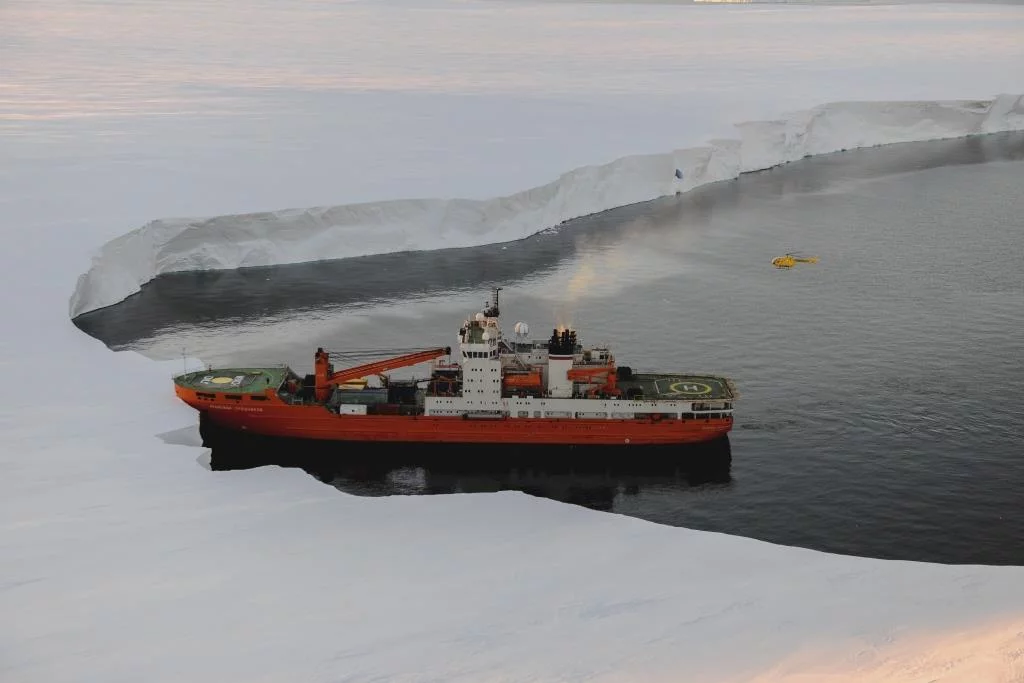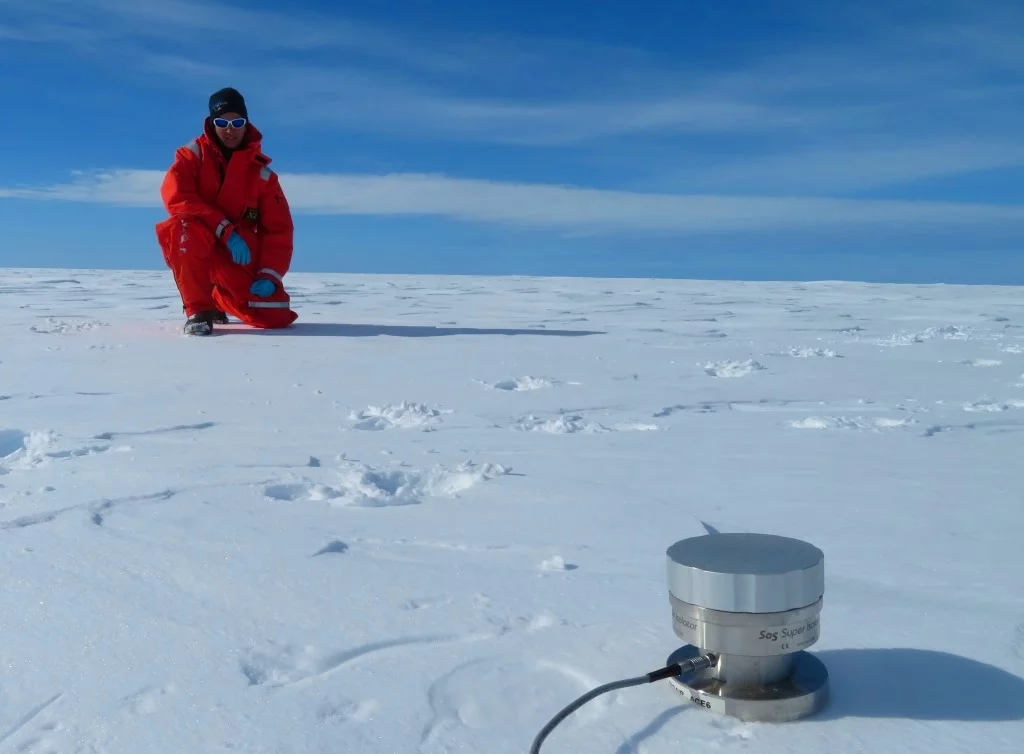Antarctic Blog
9 February 2017
Four days at the Mertz Glacier, East Antarctica
by Julia Schmale
Position: 67°30′S 144°45′E
After skipping the visit to Macquarie Islands, spirits went down for some teams. It would have been one out of two subantarctic islands in leg 2 to take soil samples and sediment cores... But bad weather is what you need to expect in these latitudes. So mentally we prepared ourselves for more rough weather near the Mertz Glacier in East Antarctica.
The Mertz Glacier is named after Dr. Xavier Mertz, a Swiss alpinist from Basel, who explored the area together with the Australian explorer Mawson in 1912 – 13.
The area is known for its katabatic winds, some of the strongest in Antarctica. During our approach before crossing the belt of pack-ice the ocean was rather calm, and fog almost reached the surface. As we were checking the instruments in the container, we coincidentally witnessed a new particle formation (NPF) event. We were surprised because we did not expect to observe a NPF event in such "dull" conditions.
The closer we moved to the glacier the stormier became the sea. In storm-like conditions, the Akademik Tryoshnikov broke the ice until we reached the open water around the Mertz Glacier. Facing its huge ice-walls that flow into the sea, our ship felt very small. Snow was blown from the ice surface and it looked wild. All plans to start operations that evening were put aside.
Position: 67°30′S 144°45′E
After skipping the visit to Macquarie Islands, spirits went down for some teams. It would have been one out of two subantarctic islands in leg 2 to take soil samples and sediment cores... But bad weather is what you need to expect in these latitudes. So mentally we prepared ourselves for more rough weather near the Mertz Glacier in East Antarctica.
The Mertz Glacier is named after Dr. Xavier Mertz, a Swiss alpinist from Basel, who explored the area together with the Australian explorer Mawson in 1912 – 13.
The area is known for its katabatic winds, some of the strongest in Antarctica. During our approach before crossing the belt of pack-ice the ocean was rather calm, and fog almost reached the surface. As we were checking the instruments in the container, we coincidentally witnessed a new particle formation (NPF) event. We were surprised because we did not expect to observe a NPF event in such "dull" conditions.
The closer we moved to the glacier the stormier became the sea. In storm-like conditions, the Akademik Tryoshnikov broke the ice until we reached the open water around the Mertz Glacier. Facing its huge ice-walls that flow into the sea, our ship felt very small. Snow was blown from the ice surface and it looked wild. All plans to start operations that evening were put aside.
The next morning the weather was terrific: blue skies, little wind and a calm sea. In a couple of hours all operations were brought under way. For our project, ACE-SPACE, this meant that the boat sat still for a day in the polynya and we were hoping to see some more NPF events. And we got lucky. We could observe two events in the two days in the bay. A first highlight of leg 2.
For me personally, this was also a very exciting time since I was able to go onto the continent to take air and snow samples for five other projects that are interested in the genetic origin of airborne microorganisms, viruses and stable isotopes in snow. The mission included a 25 minutes flight over the glacier above huge crevasses and “snow canyons” onto a small dome where it was safe for us to land. Together with three other scientists and two mountain guides, we established a little camp to be prepared just in case we could not get back that day. While the ice core drilling team started to work on extracting their core, the other scientist pulled a radar across the glacier together with one of the guides to check for crevasses and the representativeness of the drilling site. I placed myself upwind of the camp to take the air samples and snow. Once my sampling was done, I helped the drilling team. Together with the second mountain guide in a team of four, we were very efficient and extracted 20 m of ice core in less than five hours.
For me personally, this was also a very exciting time since I was able to go onto the continent to take air and snow samples for five other projects that are interested in the genetic origin of airborne microorganisms, viruses and stable isotopes in snow. The mission included a 25 minutes flight over the glacier above huge crevasses and “snow canyons” onto a small dome where it was safe for us to land. Together with three other scientists and two mountain guides, we established a little camp to be prepared just in case we could not get back that day. While the ice core drilling team started to work on extracting their core, the other scientist pulled a radar across the glacier together with one of the guides to check for crevasses and the representativeness of the drilling site. I placed myself upwind of the camp to take the air samples and snow. Once my sampling was done, I helped the drilling team. Together with the second mountain guide in a team of four, we were very efficient and extracted 20 m of ice core in less than five hours.
Back on the ship, everybody was very content with their success. Also the marine scientists were successful in exploring the ocean ground, the flora and fauna of the ecosystem near the glacier. The main reason we picked the Mertz area for more intensive research activities was that the small ice shelf collapsed seven years ago which introduced a lot of changes in the available nutrients, local water currents and other factors that impact the ecosystem.
One project brought along a remotely operated vehicle, ROV, equipped with cameras and various sampling mechanisms. The ROV is basically a robot that is able to extract sediment cores, take samples of corals and other stationary animals, measure the temperature and water conductivity among other. The two data managers on board put all efforts into displaying the ROV video live in the mess hall where we all gathered to watch the operation on the ocean ground. For our group of atmospheric scientists it was like diving into a new world.
back to all blog entries
back to all blog entries



